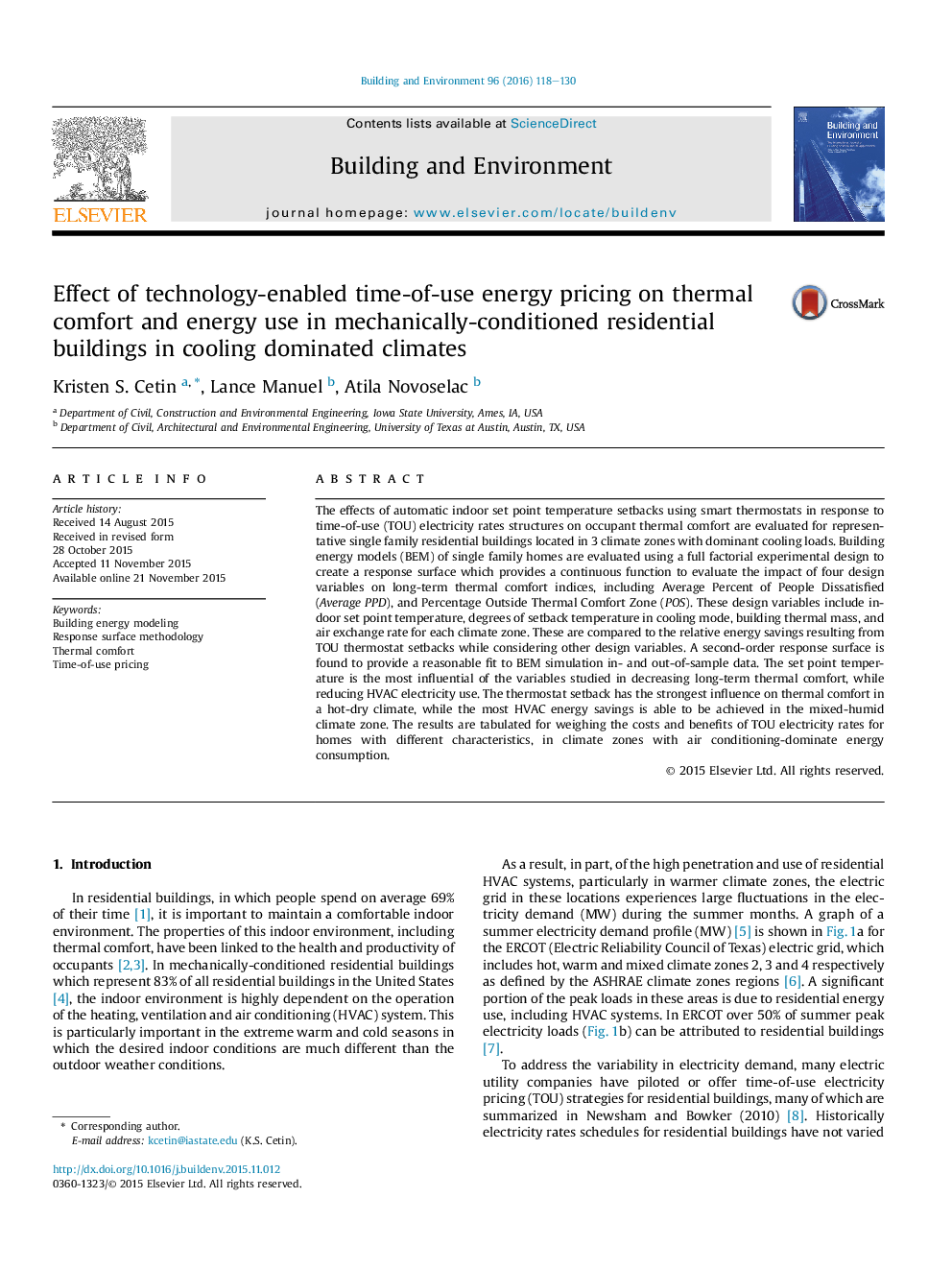| کد مقاله | کد نشریه | سال انتشار | مقاله انگلیسی | نسخه تمام متن |
|---|---|---|---|---|
| 247733 | 502525 | 2016 | 13 صفحه PDF | دانلود رایگان |
• 5-step methodology for long-term evaluation of thermal comfort.
• Second-order response surface fits in- and out-of-sample data.
• Set point temperature affects comfort most of studied variables.
• Non-linear relationship between thermal comfort and energy use.
• Average PPD covers a wider range of discomfort compared to POS.
The effects of automatic indoor set point temperature setbacks using smart thermostats in response to time-of-use (TOU) electricity rates structures on occupant thermal comfort are evaluated for representative single family residential buildings located in 3 climate zones with dominant cooling loads. Building energy models (BEM) of single family homes are evaluated using a full factorial experimental design to create a response surface which provides a continuous function to evaluate the impact of four design variables on long-term thermal comfort indices, including Average Percent of People Dissatisfied (Average PPD), and Percentage Outside Thermal Comfort Zone (POS). These design variables include indoor set point temperature, degrees of setback temperature in cooling mode, building thermal mass, and air exchange rate for each climate zone. These are compared to the relative energy savings resulting from TOU thermostat setbacks while considering other design variables. A second-order response surface is found to provide a reasonable fit to BEM simulation in- and out-of-sample data. The set point temperature is the most influential of the variables studied in decreasing long-term thermal comfort, while reducing HVAC electricity use. The thermostat setback has the strongest influence on thermal comfort in a hot-dry climate, while the most HVAC energy savings is able to be achieved in the mixed-humid climate zone. The results are tabulated for weighing the costs and benefits of TOU electricity rates for homes with different characteristics, in climate zones with air conditioning-dominate energy consumption.
Journal: Building and Environment - Volume 96, 1 February 2016, Pages 118–130
